Recent Storm Damage Posts
How To Mitigate Mold After a Flood
7/10/2023 (Permalink)
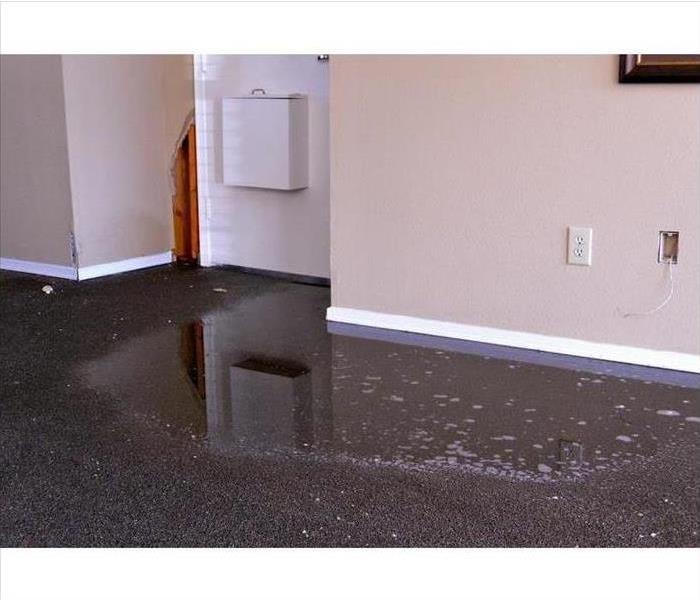 Standing water in Round Rock, TX.
Standing water in Round Rock, TX.
After a Flood, Here's How to Get Rid of Mold
Recovering from a flood at your home in Round Rock, TX, can be an overwhelming and time-consuming process. If you do not act quickly after the storm, standing water can breed bacteria and encourage mold growth. Questions you may ask after a flood can include:
- How do you know if mold is growing?
- How quickly do you need to act?
- What steps do you take to mitigate the problem?
Mold spores are everywhere in the environment. Typically, the spores do not endanger you or your home at normal levels. However, these microscopic organisms can flourish under the right conditions. Mold needs moisture to grow and spread. After a flood, the standing water in your home is the perfect environment for mold to multiply. Dampness remaining in floors, walls and basements after the floodwater subsides can cause mold growth in as little as 48 hours. So, be on the lookout for an earthy, musty smell indicative of mold. The color of mold varies, including black, brown, white, green or orange.
How Is Mold Remediated?
Mold cannot be completely eradicated, as it exists in nature and is everywhere. It can be remediated in your home by taking the following steps:
• Act fast to prevent the mold from developing and spreading. Immediately contact a team of water restoration and mold remediation specialists to remove the excess standing water. The company inspects for visible and hidden mold and moisture, contains the affected area, and filters spores from the air. Porous materials are removed, such as carpeting, and remaining surfaces are treated for bacteria, cleaned and sanitized.
• Your role as the homeowner is to immediately turn off the HVAC system if you suspect mold growth. This will prevent the further spread of spores. Do not touch the mold or attempt to clean it yourself.
Unmitigated mold growth after a storm in Round Rock, TX, can wreak havoc on your home and your health. Recognize the signs and act quickly by having a mold remediation specialist out to your home as soon as possible after your home floods.
How To Prepare Your Business For Hail Damage
6/26/2023 (Permalink)
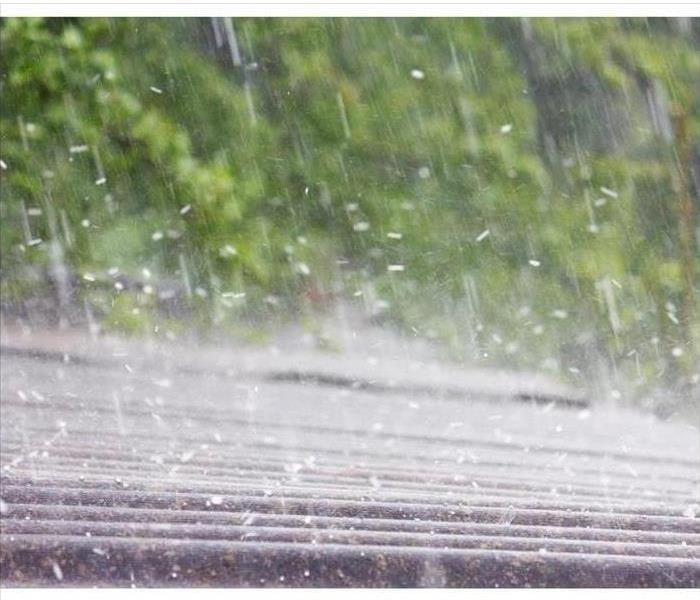 Hail storm in Round Rock, TX.
Hail storm in Round Rock, TX.
Owning a business comes with many responsibilities, not the least of which is maintaining your commercial property. Along with regular building maintenance, have a plan in place in case of natural disasters, such as hail storms. Here are a few things you can do to prepare for possible hail damage.
Know the Common Types of Hail Damage
Think through potential types of damage so you can make sure you have each one covered. Here are a few common types:
Roof Damage: This is a very common area of hail damage. Be sure to have your roof regularly inspected and repaired, especially after a hail storm. Regular maintenance can help prevent severe roof damage.
Glass Damage: If you have skylights, be sure that they are impact-resistant. Windows can be at risk too, depending on the angle of the hail coming down. Consider using impact-resistant glass here as well.
Property Damage: Hail can also cause damage to the property surrounding your building. This could include trees, HVAC units, or even commercial vehicles kept on your property.
Make Sure You are Covered
Once you have reviewed potential sources of storm damage, make sure that you have adequate commercial property insurance. This type of insurance will cover the financial impact of storm-related damage, which is an important protection for the financial health of your company. In the event of storm damage, initiate a claim with your insurance company and request authorization for a Round Rock, TX, storm damage company to come in to do repairs. You don't want to be left with roof damage or other property damage impeding your ability to get back to business.
Protect Employees
Have an emergency plan in place to make sure employees stay safe in the event of a hail storm. Designate a gathering area safely away from windows, and communicate a procedure to follow with your employees. Consider practicing emergency drills.
No one wants to think about their business suffering storm damage, but early preparation can save a lot of hassle in the event of damaging hail. Make sure you have your bases covered to protect your property, your employees and your hard work.
Alternate to Sandbags for Flood Protection
4/24/2023 (Permalink)
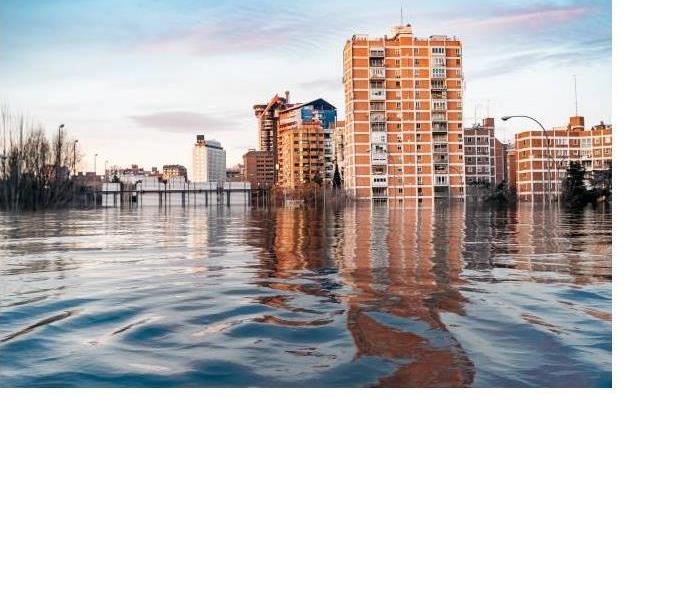 Some alternative flood protection solutions utilize water, rather than sand, to create heavy, sturdy, and stackable barriers against rising floodwater
Some alternative flood protection solutions utilize water, rather than sand, to create heavy, sturdy, and stackable barriers against rising floodwater
Flood Protection
When the weather reports indicate that a major storm is headed for your area, you likely take whatever precautions you can to protect your building from the impending storm and potential flooding. By far, the most common precautionary measure is to construct a sandbag dam or levee around properties or areas that are vulnerable to the threat of rising water. However, sandbagging is not the only way to protect your property in the event of a flood.
Water-Filled Flood Dams
Some alternative flood protection solutions utilize water, rather than sand, to create heavy, sturdy, and stackable barriers against rising floodwater. One example, the HydraBarrier, consists of a 72-inch-long tube. You use a hose to fill the tube with water, which takes around two minutes. Each tube is an effective barricade against up to six inches of floodwater. A larger example of a water-filled barrier is the AquaDam, which offers protection against up to three feet of floodwater. Filling these types of flood barriers with water is considerably faster than filling bags with sand; also, these barriers can be emptied and reused when the flooding recedes.
Levee-Style Flood Barriers
Another category of sandbag alternatives is floodwall-type flood protection. The options in this category vary widely in cost and design features.
AquaFence: For large commercial properties, the AquaFence Floodwall features panels of stainless steel, marine-grade laminate, and aluminum-laced PVC canvas that can be installed by a team of 8-10 workers to create a 4-foot-tall floodwall around your entire building.
Instee Levee Builder: This option uses a large tube and special sand-pouring machine that quickly creates an 18-inch-tall, sand-filled flood levee.
QuickDam: The QuickDam is a strip of highly absorbent fabric that absorbs and expands when exposed to water, forming up to a 3.5-inch-tall, 5-foot-long barrier that can be stacked as needed.
Flood damage remediation can be difficult and costly. With so many fast, eco-friendly alternatives to traditional sandbag barriers available, you’re sure to find the right flood prevention solution to protect your building against rising water.
How to Prepare for Hail Storm
4/6/2023 (Permalink)
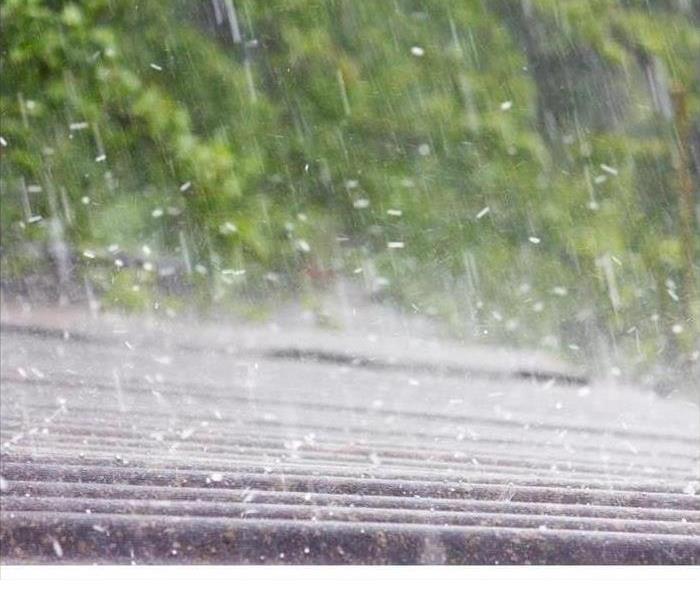 Hail Storm
Hail Storm
Owning a business comes with many responsibilities, not the least of which is maintaining your commercial property. Along with regular building maintenance, have a plan in place in case of natural disasters, such as hail storms. Here are a few things you can do to prepare for possible hail damage.
Know the Common Types of Hail Damage
Think through potential types of damage so you can make sure you have each one covered. Here are a few common types:
Roof Damage: This is a very common area of hail damage. Be sure to have your roof regularly inspected and repaired, especially after a hail storm. Regular maintenance can help prevent severe roof damage.
Glass Damage: If you have skylights, be sure that they are impact-resistant. Windows can be at risk too, depending on the angle of the hail coming down. Consider using impact-resistant glass here as well.
Property Damage: Hail can also cause damage to the property surrounding your building. This could include trees, HVAC units, or even commercial vehicles kept on your property.
Make Sure You are Covered
Once you have reviewed potential sources of storm damage, make sure that you have adequate commercial property insurance. This type of insurance will cover the financial impact of storm-related damage, which is an important protection for the financial health of your company. In the event of storm damage, initiate a claim with your insurance company and request authorization for a Round Rock, TX, storm damage company to come in to do repairs. You don't want to be left with roof damage or other property damage impeding your ability to get back to business.
Protect Employees
Have an emergency plan in place to make sure employees stay safe in the event of a hail storm. Designate a gathering area safely away from windows, and communicate a procedure to follow with your employees. Consider practicing emergency drills.
No one wants to think about their business suffering storm damage, but early preparation can save a lot of hassle in the event of damaging hail. Make sure you have your bases covered to protect your property, your employees and your hard work.
How To Maintain a Sump Pump
7/15/2022 (Permalink)
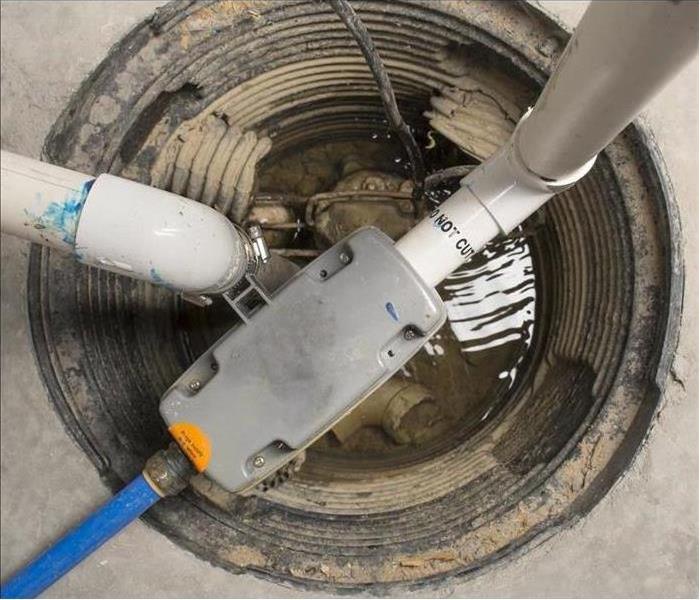 A sump pump will always be at the ready to protect your home from water damage.
A sump pump will always be at the ready to protect your home from water damage.
How To Maintain a Sump Pump
Regardless of whether you live in an area that is susceptible to floods, it is beneficial to consider having a sump pump in your home in Round Rock, TX. An exceptionally heavy rainstorm, rapidly melting snow, or a broken pipe could all be the cause of a flood in your basement that can more easily be managed with the proper equipment. Once you have your pump, there are several tasks that you should undertake regularly in order to keep it properly maintained.
Clear Obstructions
The discharge pipe and vent hole, pit, and intake screen are all points that are vulnerable to obstructions. Proper pump maintenance means checking for dirt and debris that could be preventing proper drainage, eliminating anything that is blocking the screen, and clearing things that prevent the float component from functioning. You can conduct periodic tests by pouring water into the basin. The pump should activate and drain the water. Regular maintenance of your sump pump ensures that it is ready for an emergency.
Maintain a Safe Connection
Pumps are usually run off of an electrical source, so make sure that yours is plugged into the correct type of outlet (ground fault circuit interrupter or GFCI). You should also check the cord once in a while, especially if you have any history of rodents in your basement that could damage the cord.
Replace Backup Power
Your pump probably has a backup power source. Test the battery at least annually and replace it every couple of years. The backup power source is your last line of defense in the face of a flood, so if it's been sitting unused for a lot of years, there's a good chance it won't work when you need it to. If that happens and your basement does flood, call an emergency mitigation company to evaluate for safety before you start to clean up.
A sump pump will always be at the ready to protect your home from water damage if it is maintained properly.
Tips for Cleaning Your Crawlspace After a Flood
6/27/2022 (Permalink)
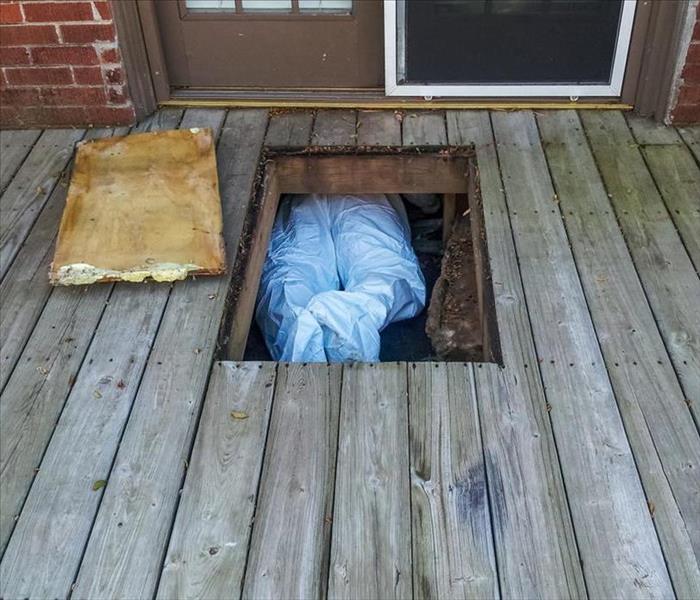 Cleaning a crawlspace after flood damage.
Cleaning a crawlspace after flood damage.
Cleaning Advice for Your Crawlspace After a Flood
A home flood can occur any time there is a storm. While there are things you can do to protect your home during storm season in Round Rock, TX, floodwater may still get in. It’s important to mitigate the damage not only in the spaces you can see but also in the spaces that are not readily visible. You should always check your crawlspace for flooding after a heavy rain.
Appropriate Safety Precautions
There are several safety precautions to take when you know your home has storm damage. Anyone who enters standing water should wear proper protective gear:
- Rubber boots
- Heavy gloves
- Face mask
- Protective coveralls
You should also turn off the electricity to reduce the risk of shock. Use good judgment -- if you think any part of your home may be unsafe, stay elsewhere. Leave wading through floodwater in your crawlspace to the technicians from the flood restoration company that you hire to mitigate the damage.
Accurate Documentation
You should report your home flood to your insurance company, but an adjuster may not be able to make it to your house quickly if there are a lot of problems in the area due to the storm. To capture the most accurate evidence of the damage, it’s a good idea to take pictures or videos of the flood’s impact on the crawlspace and other affected areas. This can be valuable when you are filing your claim.
Thorough Cleanup
Ideally, your sump pump will kick in when the water in your crawlspace starts to rise, so that should take care of a lot of the major extraction. The area must be completely dried and disinfected before the job is done, though. A thorough cleanup helps prevent mold growth and the subsequent damage it can cause to the structure of your home.
Home flood cleanup must cover both the areas you can see and those you cannot see. Don’t forget spaces such as your crawlspace when assessing the damage.
Recovering From a Flood Using Mitigation and Restoration
4/25/2022 (Permalink)
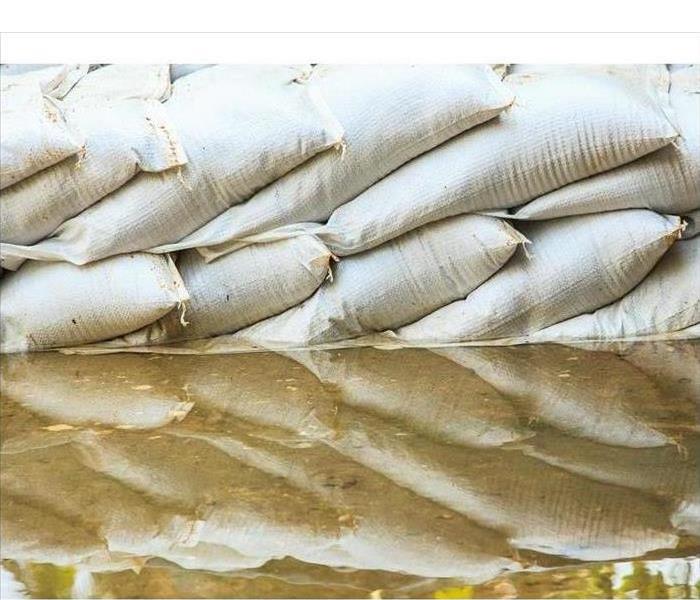 Placing sandbags strategically could keep water out of your business.
Placing sandbags strategically could keep water out of your business.
Using Mitigation and Restoration to Recover from a Flood
Experiencing a flood in your Round Rock, TX, business can feel devastating. Fortunately, there are times when you can prepare in advance to prevent damage. With the right flood cleanup company you can also recover more rapidly. But time is of the essence when mending after a flood. Begin by understanding how a professional service can help you rebuild, including the difference between mitigation and restoration.
When To Begin Mitigation
If you hear a rainstorm warning, you may be able to begin mitigation efforts before the storm ever hits. If the flooding is expected to be minimal, steps as simple as repairing cracks and holes, sealing gaps and placing sandbags strategically could keep water out of your business. Shallow water levels, for example an inch or two, may be possible to defend against in this way.
When a storm catches you off-guard, however, or the flooding is deeper, stormwater may make it into your building. Once the storm has passed and reentry is safe, a flood cleanup company can be hired to begin clearing out anything which may continue to cause damage and locate salvageable items. Beginning mitigation as soon as possible provides your business with its best chance of limiting losses.
Why Restoration Is Important
Although it’s a longer process, restoration is often required. While mitigation is meant to stop further damage from being done, restoration is necessary for repairing what damage has already occurred.
A restoration company can step in and begin replacing drywall, cleaning nonporous surfaces, and putting your business back together. During restoration, any additional areas of concern have a better chance of being located and corrected as well, improving the overall outcome and leaving you with a safe facility once again.
A storm can cause extensive damage, even when you try to prepare beforehand and mitigate the extent of the effects afterward. The damage to your business may demand a professional flood cleanup company in order to get you going again.
3 Ways To Prepare Your Commercial Building To Handle Intense Winds
4/6/2022 (Permalink)
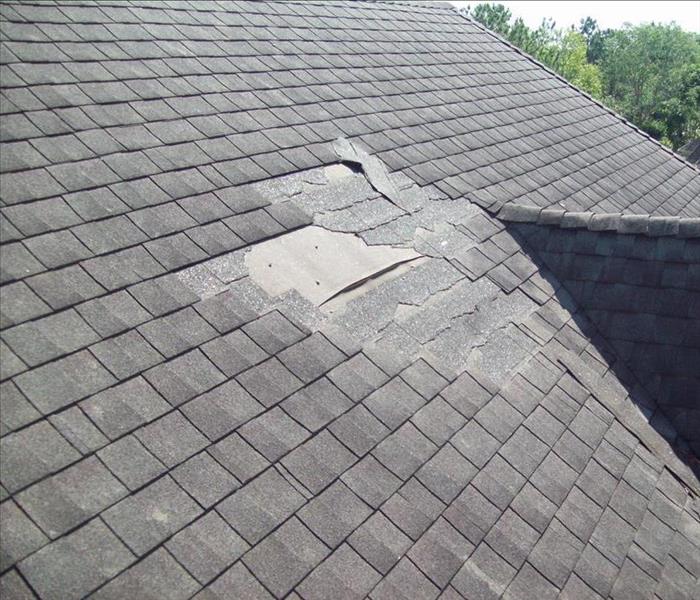 Before the storm arrives, have experts examine the rooftop, looking for any openings or loose shingles.
Before the storm arrives, have experts examine the rooftop, looking for any openings or loose shingles.
Three Ways To Secure the Premises
Hurricanes are classified by wind speed, with each level increasing in devastating intensity. In fact, using specialized technology, the National Hurricane Center measures the wind, using the data to place the system within one of five levels. To minimize hurricane damage, commercial owners in Round Rock, TX, should implement essential safety protocols. Getting ahead of the storm has the potential to save headache major costs. The following are three ways to secure the premises.
1. Inspect the Roof
High winds can range from 74 mph to over 200 mph, exerting immense force on the property's roofing. While this structure is designed to handle external elements, issues can arise if it's not in the best shape. Before the storm arrives, have experts examine the rooftop, looking for any openings or loose shingles. Repair them to avoid leaks and saturation.
Discuss upgrading the materials. Wind can pick up the roofing. Add straps to hold the roof framing and wall framing together. Also, speak with professionals about changing to impact-resistant shingles.
2. Clear the Land
Safeguard from hurricane damage by eliminating potential obstacles. Walk around the property, checking for anything loose. Move furniture and bulkier items inside. Pick up sticks and branches. While they may seem innocuous, even minor things can become a significant issue if hurled into the build. Breaks to the exterior permit interior flooding. A water restoration company should assess the moisture and clean up the trouble.
3. Reinforce Windows
Windows and glass doors are incredibly vulnerable. Prepare for this danger. Extreme wind speeds can shatter the glass. Shutters and plywood establish barriers, working to fight against such intrusions. Another option is to purchase windows with a higher wind rating. Look for something with a high design pressure rating. While issues could still arise, the more substantial the build, the lower the risk.
Proactive efforts reduce hurricane damage risk. Before a maelstrom barrels into town, check out the grounds and secure the vulnerable spots. Reinforce weaker zones and pick up possible fliers. Simple steps could make life easier down the road.
Handling a Flooded Basement: 3 Actions You Can Take Right Away
1/31/2022 (Permalink)
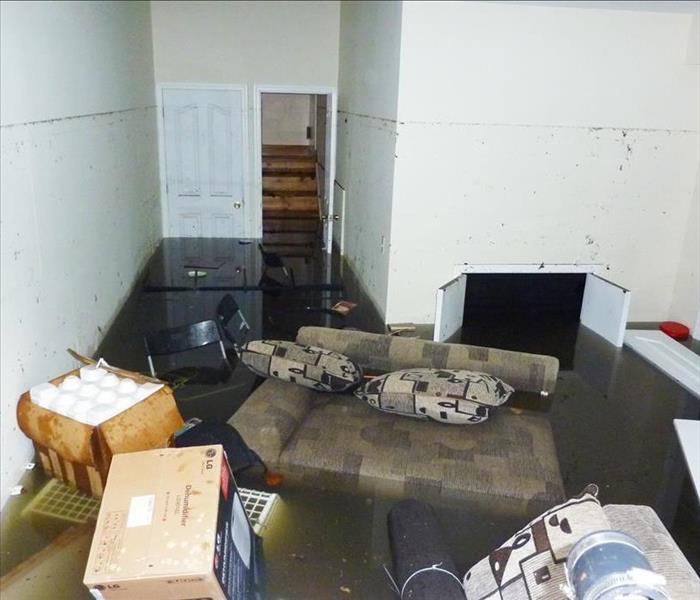 A flooded basement in Round Rock, TX.
A flooded basement in Round Rock, TX.
Ways To Handle a Basement Flood
When unexpected flooding affects your Round Rock, TX, home’s basement, it can be difficult to know how to proceed with finding the source of the water and how to drain it away. Unexpected floods can occur for an array of reasons, from sudden thaws to a plumbing mishap. Knowing which steps to take can help you handle a basement flood calmly, even if it was the last thing you expected.
1. Find the Flood Source
Thawing snow and ice and the resulting runoff may be a cause of basement flooding, especially if your roof has poor drainage or if your gutters and downspouts are clogged. Check your home’s drainage system and clear any clogs, then check to make sure runoff is being channeled away from your home, not toward it. If you find a broken water pipe in your basement, turn off the water to prevent further flooding.
2. Determine Safety Levels
If your basement is flooded with water because of burst pipe, the water should be relatively safe to enter if you want to retrieve stored items right away or attempt pipe repair. However, you may want to cut the power to the room first to avoid any risk of electric shock. If the flood water is coming in from poor drainage or spring flooding, it may contain microbes and pathogens that cause illness, and you should avoid touching this water. Seal off the room until help arrives.
3. Call In Flood Cleanup Professionals
A flood cleanup and restoration company can be your first line of defense against dangerous or standing water after a basement flood. Restoration techs can remove contaminated water safely and advise you about what kind of water damage it left behind. If you are concerned about mold, they can inspect and treat affected areas to ensure no growth occurs.
When your Round Rock, TX, home’s basement is affected by flooding, the resulting mess can be hard to handle. However, when you know how to react, you can minimize the damage and get the cleanup process started right away.
How to Handle a Roof Leak
11/20/2021 (Permalink)
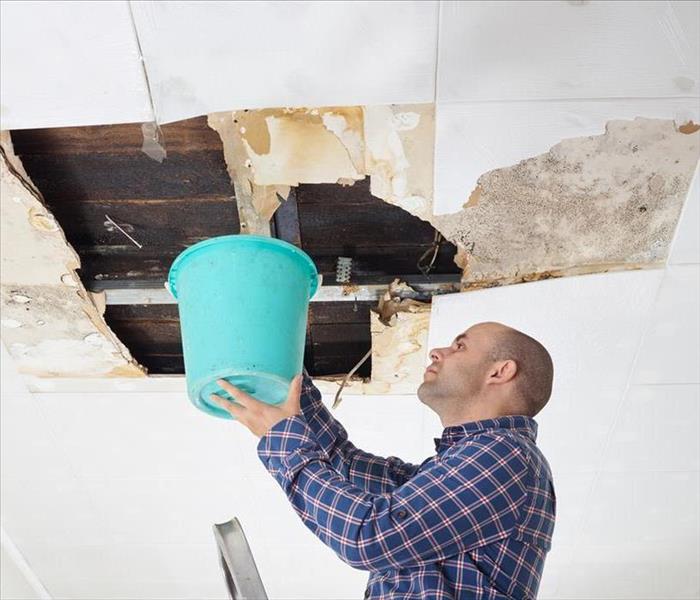 Roof leaking in Round Rock, TX
Roof leaking in Round Rock, TX
How to Deal with a Roof Leak
Slight discoloration or a slow drip of water from the ceiling can quickly put a stop to everything else you had on your schedule. This is because the most likely cause of those unwelcome signs is a roof leak, and you know that leaks could lead to extensive and expensive repairs. What should you do when you see water stains running down the walls or a spot on the ceiling that doesn't seem quite right?
Common Damages
Perhaps one of the most important things to do at this point is to understand the risks. Even tiny leaks could eventually lead to really big problems, including
- Soggy insulation
- Rotted framing
- Ruined drywall
- Damaged ceilings
- Pooled water inside walls
- Mold and mildew growth
Exterior Repairs
How do you clean up a leaking roof once you've found it? Gather up all of the tools and supplies you'll need. These may include a cordless drill, a pry bar, hammer, caulk gun, putty knife, and tin snips, if you have them handy. Next, separate tasks into those you can handle on your own and those that require professional attention. Replacing missing shingles or damaged flashing could be dangerous because of slick conditions.
Interior Repairs
The roof leak work on the inside of your building will go a bit differently. You may need to release water from a bowed ceiling. To do this, poke several small holes in the area with buckets below for catching the released water. You'll probably need to pull out sections of wet materials before you begin the drying process. Ask water removal specialists for advice regarding disinfecting water-affected materials.
Turn to Professionals
When you've done as much of the work as you can complete on your own, it will be time to turn the restoration of the roof and ceilings over to a professional in Round Rock, TX. Remember to contact your insurance provider before you get started to be sure that your claim will be covered.
The 5 Best Storm Preparation Tips
9/27/2021 (Permalink)
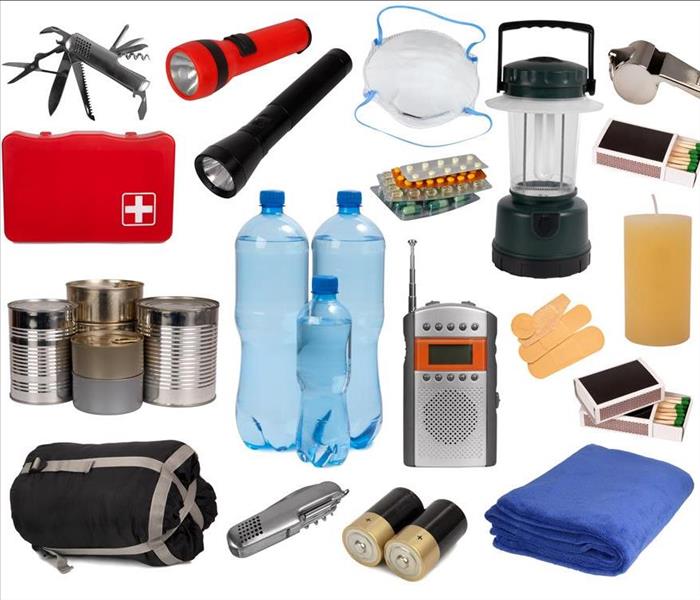 Prepare for adverse weather in Round Rock, TX.
Prepare for adverse weather in Round Rock, TX.
Storm Preparation Tips
Preparing for a storm in advance can help you be ready when high winds, rain, or flood water arrive. These five storm preparation tips can help you stay safe and limit wind and water damage to your home in Round Rock, TX.
1. Trim Trees To Clear Your Yard
Pruning trees and shrubs can keep heavy branches from falling and damaging your roof or becoming dangerous wind-blown debris. Bring in items kept outside to prevent them from sustaining or causing damage.
2. Cover Windows With Secure Shutters
Cover the windows if high winds and flying debris are expected. Board up openings right before a major storm or have storm windows or shutters installed if you live in an area with frequent tempests.
3. Assemble an Emergency Preparedness Kit
Make a plan that accounts for every member of your household. Gather non-perishable items of food, a first aid kit, flashlights, hand cranked or battery-powered radio, and extra batteries. You will need at least one gallon of water per person and enough food for at least three days; in addition, throw in some garbage bags and moist towelettes for sanitation.
4. Anticipate Power Line Outages
Have flashlights and batteries on hand and make sure you know how to shut off the power to your home. Turn off the electricity if you see rising flood water, downed power lines, or need to evacuate.
5. Prepare a Go-Bag for Evacuation
Fill your vehicle up with gas and prepare a go-bag car kit with more non-perishable food, jumper cables, flares, maps, tools, a first aid kit, sleeping bags, flashlights, and batteries. Collect important papers in a secure box that you can grab if you need to flee a flooded building.
Prepare for adverse weather in Round Rock, TX, by following these five steps. If your home sustains damage from wind or water damage from flood water, contact a residential damage restoration company.
How To Mitigate Mold After a Flood
7/29/2021 (Permalink)
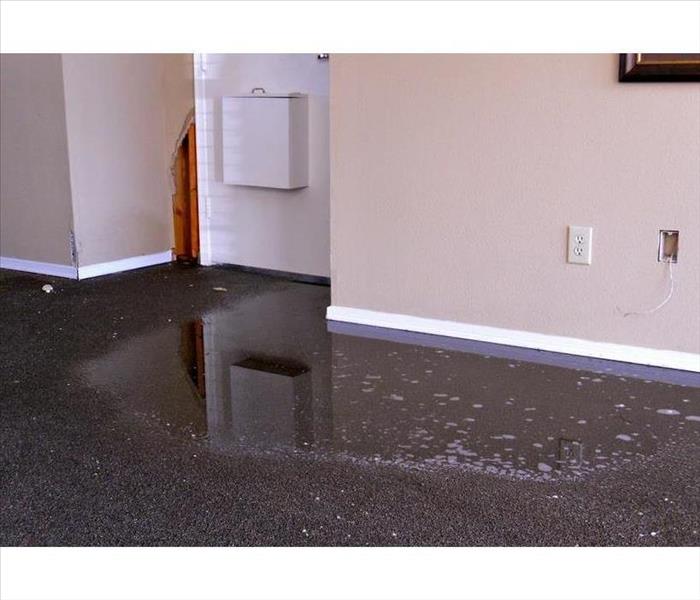 Standing water in Round Rock, TX.
Standing water in Round Rock, TX.
After a Flood, Here's How to Get Rid of Mold
Recovering from a flood at your home in Round Rock, TX, can be an overwhelming and time-consuming process. If you do not act quickly after the storm, standing water can breed bacteria and encourage mold growth. Questions you may ask after a flood can include:
- How do you know if mold is growing?
- How quickly do you need to act?
- What steps do you take to mitigate the problem?
Mold spores are everywhere in the environment. Typically, the spores do not endanger you or your home at normal levels. However, these microscopic organisms can flourish under the right conditions. Mold needs moisture to grow and spread. After a flood, the standing water in your home is the perfect environment for mold to multiply. Dampness remaining in floors, walls and basements after the floodwater subsides can cause mold growth in as little as 48 hours. So, be on the lookout for an earthy, musty smell indicative of mold. The color of mold varies, including black, brown, white, green or orange.
How Is Mold Remediated?
Mold cannot be completely eradicated, as it exists in nature and is everywhere. It can be remediated in your home by taking the following steps:
• Act fast to prevent the mold from developing and spreading. Immediately contact a team of water restoration and mold remediation specialists to remove the excess standing water. The company inspects for visible and hidden mold and moisture, contains the affected area, and filters spores from the air. Porous materials are removed, such as carpeting, and remaining surfaces are treated for bacteria, cleaned and sanitized.
• Your role as the homeowner is to immediately turn off the HVAC system if you suspect mold growth. This will prevent the further spread of spores. Do not touch the mold or attempt to clean it yourself.
Unmitigated mold growth after a storm in Round Rock, TX, can wreak havoc on your home and your health. Recognize the signs and act quickly by having a mold remediation specialist out to your home as soon as possible after your home floods.
Flood Protection: Your Guide to Sandbag Alternatives
5/28/2021 (Permalink)
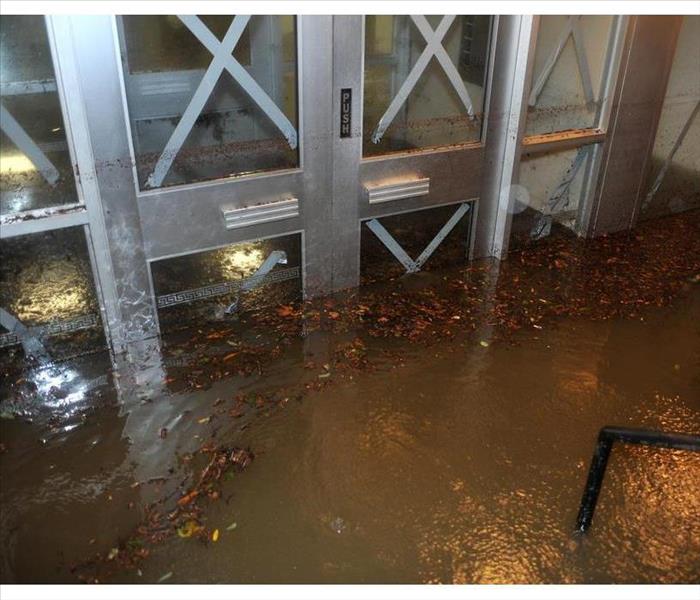 Flooded entrance of a building in Round Rock, TX.
Flooded entrance of a building in Round Rock, TX.
Flood Protection
When the weather reports indicate that a major storm is headed for Round Rock, TX, you likely take whatever precautions you can to protect your building from the impending storm and potential flooding. By far, the most common precautionary measure is to construct a sand bag dam or levee around properties or areas that are vulnerable to the threat of rising water. However, sandbagging is not the only way to protect your property in the event of a flood.
Water-Filled Flood Dams
Some alternative flood protection solutions utilize water, rather than sand, to create heavy, sturdy, and stackable barriers against rising floodwater. One example, the HydraBarrier, consists of a 72-inch-long tube. You use a hose to fill the tube with water, which takes around two minutes. Each tube is an effective barricade against up to six inches of floodwater. A larger example of a water-filled barrier is the AquaDam, which offers protection against up to three feet of floodwater. Filling these types of flood barriers with water is considerably faster than filling bags with sand; also, these barriers can be emptied and reused when the flooding recedes.
Levee-Style Flood Barriers
Another category of sand bag alternatives is floodwall-type flood protection. The options in this category vary widely in cost and design features.
AquaFence: For large commercial properties, the AquaFence Floodwall features panels of stainless steel, marine-grade laminate, and aluminum-laced PVC canvas that can be installed by a team of 8-10 workers to create a 4-foot-tall floodwall around your entire building.
Instee Levee Builder: This option uses a large tube and special sand-pouring machine that quickly creates an 18-inch-tall, sand-filled flood levee.
QuickDam: The QuickDam is a strip of highly absorbent fabric that absorbs and expands when exposed to water, forming up to a 3.5-inch-tall, 5-foot-long barrier that can be stacked as needed.
Flood damage remediation can be difficult and costly. With so many fast, eco-friendly alternatives to traditional sand bag barriers available, you’re sure to find the right flood prevention solution to protect your building against rising water.
How To Prepare Your Business For Hail Damage
4/10/2021 (Permalink)
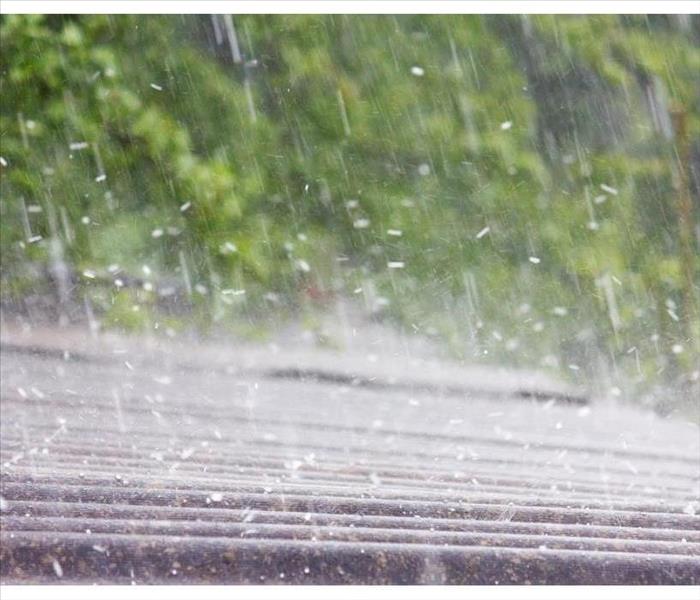 Hail storm in Round Rock, TX.
Hail storm in Round Rock, TX.
Owning a business comes with many responsibilities, not the least of which is maintaining your commercial property. Along with regular building maintenance, have a plan in place in case of natural disasters, such as hail storms. Here are a few things you can do to prepare for possible hail damage.
Know the Common Types of Hail Damage
Think through potential types of damage so you can make sure you have each one covered. Here are a few common types:
Roof Damage: This is a very common area of hail damage. Be sure to have your roof regularly inspected and repaired, especially after a hail storm. Regular maintenance can help prevent severe roof damage.
Glass Damage: If you have skylights, be sure that they are impact-resistant. Windows can be at risk too, depending on the angle of the hail coming down. Consider using impact-resistant glass here as well.
Property Damage: Hail can also cause damage to the property surrounding your building. This could include trees, HVAC units, or even commercial vehicles kept on your property.
Make Sure You are Covered
Once you have reviewed potential sources of storm damage, make sure that you have adequate commercial property insurance. This type of insurance will cover the financial impact of storm-related damage, which is an important protection for the financial health of your company. In the event of storm damage, initiate a claim with your insurance company and request authorization for a Round Rock, TX, storm damage company to come in to do repairs. You don't want to be left with roof damage or other property damage impeding your ability to get back to business.
Protect Employees
Have an emergency plan in place to make sure employees stay safe in the event of a hail storm. Designate a gathering area safely away from windows, and communicate a procedure to follow with your employees. Consider practicing emergency drills.
No one wants to think about their business suffering storm damage, but early preparation can save a lot of hassle in the event of damaging hail. Make sure you have your bases covered to protect your property, your employees and your hard work.


 24/7 Emergency Service
24/7 Emergency Service













